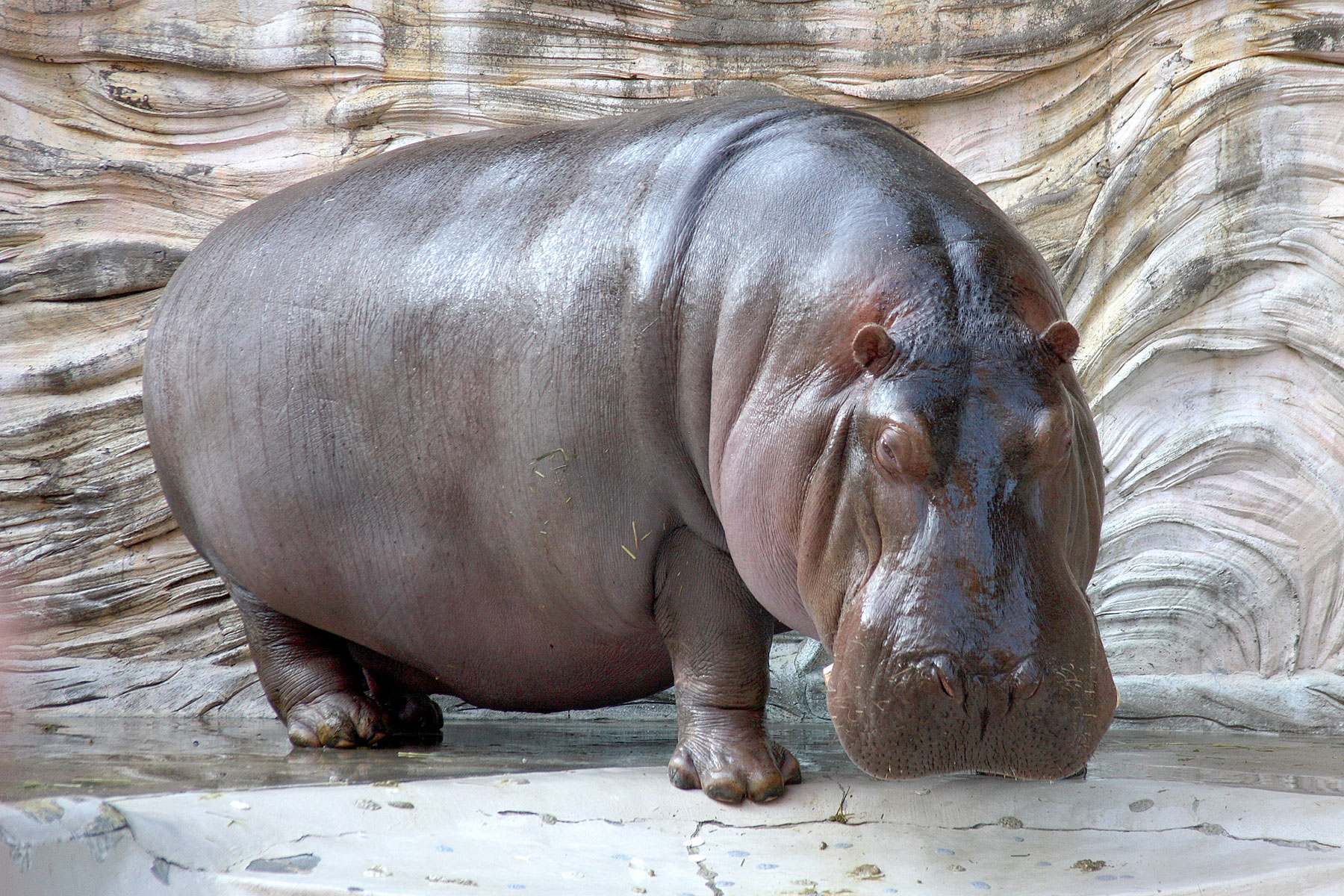 |
| Hippopotamus aethiopicus |
The hippotamus is not much of a threat to us, as it is relatively remote to cities and towns. Indeed the only place where it exists in large numbers in close proximity to urban centres, is on the Nile. Yet this situation was very different in the ancient past. They were a real threat to nomads and hunter-gatherers.
Our ancestors had to tread lightly to avoid the ire of these water-dwelling hulks. Now evidence shows that even our evolutionary ancestors had to contend with the hippopotamus. In the savannah, water holes and rivers are centres of ecological diversity, attracting creatures from miles around. Early hominids would have been amongst the daily visitors, but many of the pools would have been home to herds of the hippopotamus also. While this may seem like speculation, fossil evidence from the Koobi Fora region in Kenya, shows hippos swimming in waters in close proximity to our ancestors.
 |
| The 1.4 million year old hippopotamus tracks at Koobi Fora |
Recent excavations at Koobi Fora by researchers from the University of Bournemouth led to the discovery of a series of trackways made by juvenile and adult members of the species Hippopotamus gorgops and Hippopotamus aethiopicus. The track ways, made in fine silt which once sat at the bottom of one of those lakes, are clear evidence of wading.
 |
| A false colour scan of one of the footprints from Koobi Fora |
Underwater, the hippos would glide with their limbs folded beneath their bodies. They would occasionally scratch the bottom of the tank with one leg, dragging only their digits across the ground. Sometimes, the hippos would thrust upward, toward the water surface, using both hind legs. The trails they made matched those found at Koobi Fora.
The tracks are certainly interesting, but what makes them more special is that they are in close proximity to footprints made by hominids, lying less that 70 metres away. This shows that they are of the same age. The Koobi Fora region was a hotbed of hominid activity with numerous fossils of a variety of species having been collected over the past few decades. Far less attention, however, is paid to other creatures which inhabited the area. If we are to truly understand our evolutionary story, we must be able to view it in the context of the environments in which it transpired. While hippo footprints may not sound like much, they provide an important part of the puzzle of the Koobi Fora ecosystem, an ecosystem which shaped the course of our species.